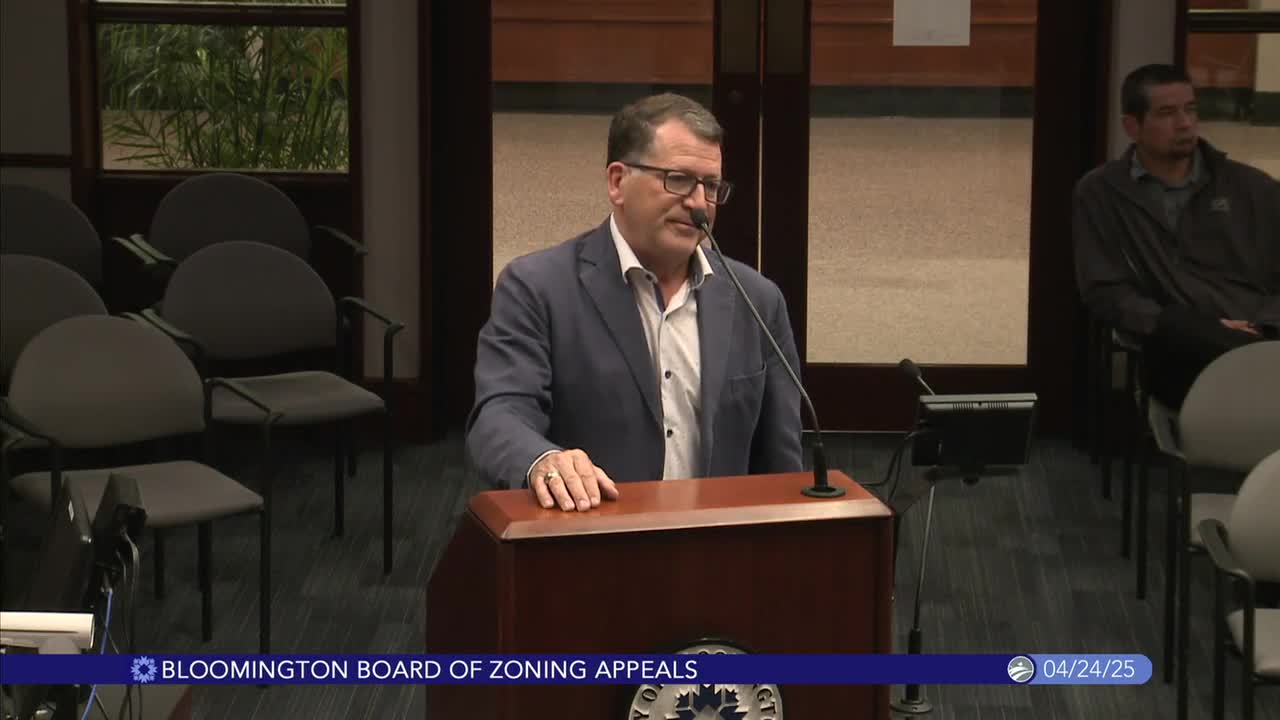City Council Discusses Height Variance for Elevator Shafts in Downtown Development
April 25, 2025 | Bloomington City, Monroe County, Indiana
This article was created by AI summarizing key points discussed. AI makes mistakes, so for full details and context, please refer to the video of the full meeting. Please report any errors so we can fix them. Report an error »

During the Bloomington Board of Zoning Appeals meeting on April 24, 2025, a significant discussion centered around a proposed variance for a new residential building that includes elevator shafts exceeding the city’s height regulations. The board deliberated on whether to grant this variance, which would allow for increased accessibility to a rooftop garden, a feature that proponents argue enhances the living space for future residents.
The primary concern raised was the building's compliance with the Unified Development Ordinance (UDO), which sets a maximum height limit of 40 feet. Board members debated the necessity of the elevator shafts, which are intended to provide safe access to the roof. While some members expressed support for the variance, citing the narrowness of the lot and the unique characteristics of the property that limit usable space, others pointed out that the building could still function within the existing height restrictions without the additional structures.
Eric, a city staff member, noted that while the building technically meets height standards without the elevator shafts, the added height could improve safety and usability for residents. He acknowledged that the narrow design of the building presents challenges in maximizing living space, making the case for the variance more compelling.
The board also discussed the lack of similar rooftop access in the surrounding area, with most nearby buildings primarily featuring mechanical equipment on their roofs rather than usable spaces. This context raised questions about whether granting the variance would set a precedent for future developments in the downtown area.
As the meeting concluded, the board recognized the need to balance adherence to zoning laws with the potential benefits of enhancing residential living conditions. The decision on the variance will ultimately reflect the city’s commitment to fostering accessible and livable urban spaces while maintaining regulatory standards. The board plans to continue discussions in upcoming meetings, weighing community needs against zoning regulations.
The primary concern raised was the building's compliance with the Unified Development Ordinance (UDO), which sets a maximum height limit of 40 feet. Board members debated the necessity of the elevator shafts, which are intended to provide safe access to the roof. While some members expressed support for the variance, citing the narrowness of the lot and the unique characteristics of the property that limit usable space, others pointed out that the building could still function within the existing height restrictions without the additional structures.
Eric, a city staff member, noted that while the building technically meets height standards without the elevator shafts, the added height could improve safety and usability for residents. He acknowledged that the narrow design of the building presents challenges in maximizing living space, making the case for the variance more compelling.
The board also discussed the lack of similar rooftop access in the surrounding area, with most nearby buildings primarily featuring mechanical equipment on their roofs rather than usable spaces. This context raised questions about whether granting the variance would set a precedent for future developments in the downtown area.
As the meeting concluded, the board recognized the need to balance adherence to zoning laws with the potential benefits of enhancing residential living conditions. The decision on the variance will ultimately reflect the city’s commitment to fostering accessible and livable urban spaces while maintaining regulatory standards. The board plans to continue discussions in upcoming meetings, weighing community needs against zoning regulations.
View full meeting
This article is based on a recent meeting—watch the full video and explore the complete transcript for deeper insights into the discussion.
View full meeting
